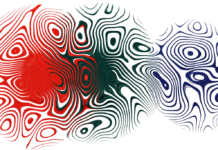The Wayback Machine, an extraordinary digital archive and web preservation tool, stands as a testament to humanity’s commitment to preserving the ever-evolving landscape of the internet. In this comprehensive exploration, we delve deep into the history, significance, and profound impact of the Wayback Machine on the digital realm, charting its journey from inception to its present-day role as a digital time capsule.
The Wayback Machine, often simply referred to as “Wayback,” is a digital archive and web preservation service that has revolutionized the way we perceive and interact with the internet. Developed and maintained by the Internet Archive, a nonprofit organization dedicated to capturing and archiving digital content, the Wayback Machine is an unparalleled resource for accessing historical versions of websites, tracking the evolution of web content, and preserving the ephemeral nature of the online world.
At its core, the Wayback Machine is a colossal digital library, a time-traveling repository of the web’s past. Its mission is to capture, archive, and make accessible the vast expanse of the World Wide Web, ensuring that the internet’s rich history remains a tangible and invaluable resource for future generations. This monumental endeavor is driven by the belief that the internet, with its ever-changing content and ephemeral nature, is a critical cultural artifact of our times.
The story of the Wayback Machine begins in the late 20th century, a period when the internet was experiencing exponential growth and transformation. In those early days, web content was often volatile and transient, with websites constantly evolving or disappearing altogether. Recognizing the need to preserve this digital heritage, the Internet Archive embarked on a visionary mission to create a digital time capsule, capturing snapshots of the web at different points in time.
The Wayback Machine officially launched in 2001, and its name is a nod to the concept of time travel, drawing inspiration from the fictional “Wayback Machine” in H.G. Wells’ classic novel, “The Time Machine.” In essence, the Wayback Machine allows users to embark on their own digital time travel adventures, providing them with the ability to explore the internet’s past, witness the evolution of websites, and gain insights into the ever-changing landscape of information and culture online.
One of the most remarkable aspects of the Wayback Machine is its scale. It boasts a vast and continuously expanding archive of web content, encompassing billions of web pages dating back to the early days of the internet. This sheer volume of archived data makes it an invaluable resource for researchers, historians, journalists, and curious individuals seeking to explore the digital footprints of the past.
The Wayback Machine’s impact on the preservation of digital culture cannot be overstated. It has played a pivotal role in safeguarding digital artifacts, ranging from early websites and online forums to multimedia content, blogs, and social media posts. This preservation effort ensures that the evolution of internet culture, trends, and discourse is documented and accessible for posterity.
Moreover, the Wayback Machine serves as a crucial tool for holding individuals, organizations, and governments accountable for their online activities. In an age where digital information can be altered or erased with ease, the Wayback Machine provides an independent and reliable means of verifying online claims, tracking changes to web content, and preserving evidence of historical events and controversies.
The platform’s impact extends beyond archival purposes. It has been instrumental in facilitating research and scholarly endeavors. Researchers can trace the development of web technologies, analyze shifts in online discourse, and investigate the historical context of digital phenomena. This wealth of information empowers academics to gain unique insights into the evolution of human interaction with the internet.
Furthermore, the Wayback Machine has become a valuable resource for digital forensics and legal investigations. It has been used to recover deleted web content, corroborate digital evidence, and provide context in legal disputes. Its role in preserving the integrity of digital information has made it an essential tool in the digital age’s evolving landscape of law and justice.
In the realm of journalism, the Wayback Machine serves as an invaluable resource for fact-checking and contextualizing news stories. Journalists can reference archived web pages to verify statements, track the evolution of online narratives, and uncover historical data that may shed light on current events. This ability to access the internet’s historical record contributes to the accuracy and credibility of journalism in the digital era.
The Wayback Machine also supports the accessibility and usability of websites. It allows web developers and designers to view previous versions of their own sites or explore the design and functionality of other websites over time. This feature aids in website maintenance, troubleshooting, and the preservation of user experience standards.
Moreover, the Wayback Machine has become a source of nostalgia and cultural exploration. Individuals can revisit websites, forums, and social media platforms from their past, evoking memories of early internet experiences and online communities. It serves as a digital time capsule for personal reflection and a testament to the ever-changing nature of online culture.
The Wayback Machine’s impact goes beyond the realm of technology and culture; it has legal and ethical implications as well. The platform raises questions about the ownership and control of online content. It prompts discussions about digital privacy and the right to be forgotten, as individuals grapple with the permanence of their online presence in an era of increasing digital surveillance.
In conclusion, the Wayback Machine is a digital marvel, a portal to the past, and a guardian of the internet’s history. Its impact on research, journalism, digital forensics, and the preservation of online culture is immeasurable. It symbolizes the collective effort to ensure that the internet’s ever-changing landscape remains accessible to future generations, serving as a testament to the evolution of human knowledge and creativity in the digital age.
Web Archive Access:
The Wayback Machine provides access to a vast archive of web pages dating back to the early days of the internet, allowing users to explore the historical evolution of websites and online content.
Snapshot Comparison:
Users can compare different snapshots of a web page to track changes in content, design, and functionality over time, making it a valuable tool for researchers and web developers.
URL Preservation:
The platform preserves web page URLs, ensuring that archived content remains accessible even if the original website is no longer available or has changed.
Advanced Search:
The Wayback Machine offers a powerful search feature that allows users to search for specific web pages or content within the archive, making it easier to find historical information.
Site-Wide Crawls:
It conducts periodic site-wide crawls of popular websites, capturing a comprehensive snapshot of a website’s content, including multimedia elements, scripts, and linked pages.
Public Contributions:
Users can contribute to the archive by submitting URLs for inclusion, enabling the community to help expand the coverage of archived content.
Calendar View:
The platform offers a calendar view that allows users to browse archived content by date, providing an intuitive way to navigate through the archive’s historical records.
API Access:
Developers can access the Wayback Machine’s API to integrate its features into their applications, enabling customized web archival solutions and research tools.
Citation and Linking:
Users can generate citations for archived web pages and obtain permanent links to specific snapshots, making it easier to reference and share historical web content.
Save Page Functionality:
The Wayback Machine allows users to save and archive web pages for future reference, ensuring that they can revisit specific content whenever needed.
These key features collectively make the Wayback Machine a valuable resource for researchers, historians, journalists, web developers, and anyone interested in exploring the historical record of the internet.
The Wayback Machine’s journey transcends the technical features and functionalities that make it a powerful web archiving tool. It is a story of digital preservation, cultural heritage, and the ever-changing landscape of the internet. As we delve deeper into this narrative, we uncover the profound implications of the Wayback Machine on our understanding of the digital world and its impact on society.
At its core, the Wayback Machine embodies the human instinct to record and preserve. It acknowledges that the internet is more than just a repository of information; it is a dynamic reflection of human thought, creativity, and expression. Just as libraries and museums have preserved physical artifacts for centuries, the Wayback Machine extends this tradition to the digital realm, ensuring that the internet’s rich tapestry of content is not lost to the sands of time.
In many ways, the Wayback Machine is a response to the ephemeral nature of the internet. Websites, like fleeting moments, can disappear without a trace. Links break, servers go offline, and entire online communities can vanish. The Wayback Machine serves as a digital time capsule, capturing these moments and preserving them for future generations. It is a testament to our desire to leave a mark on the digital landscape, to say, “We were here, and this is what we created.”
Moreover, the Wayback Machine challenges our perception of time in the digital age. In the physical world, we are accustomed to the idea of historical records, artifacts, and archives. We visit museums to view ancient manuscripts, explore historical documents in libraries, and marvel at archaeological discoveries. The Wayback Machine extends this concept to the internet, inviting us to explore the history of websites, blogs, and online communities.
This concept of “web archaeology” is a fascinating aspect of the Wayback Machine’s mission. It allows us to excavate the layers of the digital past, uncovering forgotten websites, early iterations of popular platforms, and the digital relics of bygone eras. It is a reminder that the internet, like civilization itself, has a history that is worth preserving and studying.
In addition to its role as a digital time capsule, the Wayback Machine has profound implications for digital scholarship. Researchers across various disciplines rely on the platform to study shifts in online discourse, track the evolution of digital technologies, and analyze the impact of online communities on society. It is a treasure trove of data for social scientists, historians, and communication scholars, offering insights into the ever-changing dynamics of the digital world.
Furthermore, the Wayback Machine plays a crucial role in media studies and journalism. It allows journalists to fact-check claims made on the internet, providing a valuable resource for verifying online information. It is a tool for contextualizing news stories, exploring the evolution of online narratives, and uncovering the historical context of digital events. In an era of information overload and misinformation, the Wayback Machine is a beacon of reliability and truth.
The platform’s impact also extends to the world of literature and storytelling. Writers and artists draw inspiration from the digital past, weaving the stories of the internet into their narratives. It has become a source of nostalgia for those who remember the early days of the web, a time when personal websites and online forums were the virtual town squares of the internet. The Wayback Machine enables us to revisit these digital memories, evoking a sense of longing for the simplicity and creativity of the early web.
Moreover, the Wayback Machine serves as a digital witness to historical events and cultural phenomena. It captures moments of triumph and tragedy, from political movements and social revolutions to the rise and fall of internet memes. It is a mirror that reflects the collective consciousness of the internet, a tapestry of human experiences and emotions woven together in the digital realm.
In an era of rapid technological change, the Wayback Machine reminds us of the importance of digital preservation. It raises questions about the durability of digital information and the need for ongoing efforts to safeguard our digital heritage. It challenges us to think about the ethical and legal considerations of archiving the internet, including issues of privacy, copyright, and the right to be forgotten.
In conclusion, the Wayback Machine is not just a digital tool; it is a symbol of our commitment to preserving the internet’s history and cultural significance. It is a testament to the human desire to record, remember, and reflect on our digital experiences. As the digital landscape continues to evolve, the Wayback Machine stands as a guardian of the past, a guide to the present, and a bridge to the future of the internet.






















